Everything You Need to Know About Deepfake Voice

Are you ready to take your content creation to the next level? With deepfake technology, you can create audio that sounds completely natural and life-like. Deepfake voice has been used in films, video games, podcasts - and now it’s available for anyone with access to modern software.
In this blog post we’ll dive deep into what makes a deepfake voice so special and how you can get started using the software yourself. From artificial neural networks and advanced speech synthesis algorithms, to professional tips from experienced podcast creators on how best to use it – this is everything you need to know about creating stunning audio performances with deepfake voice technology.
Table of Contents
1. Introduction to Deepfake Voice Technology
2. How Deepfake Voice Works: Understanding the Process
3. Risks and Challenges of Deepfake Voice Technology
4. Legal and Regulatory Implications
5. Top Deepfake Voice and Synthetic Voice Generation Software
6. Benefits of using Deepfake Voice for Individuals and Businesses
7. The Future of Deepfake Voice Technology
8. Conclusion: Embracing the Advancements Responsibly
Introduction to Deepfake Voice Technology
Deepfake voice technology has rapidly emerged as a groundbreaking innovation that allows the manipulation of audio recordings to produce synthetic speech that closely mimics a real person's voice. Using advanced artificial intelligence algorithms, deepfake voice technology can generate fake audio that sounds eerily authentic, making it increasingly difficult to distinguish from genuine recordings.
With the capability to replicate a person's voice and even create entirely new speech patterns, deepfake voice technology raises both fascination and concern about its potential applications and ethical implications in various fields. As this technology continues to evolve, it becomes essential to understand its workings, risks, and benefits to navigate the world of synthetic audio responsibly.
How Deepfake Voice Works: Understanding the Process
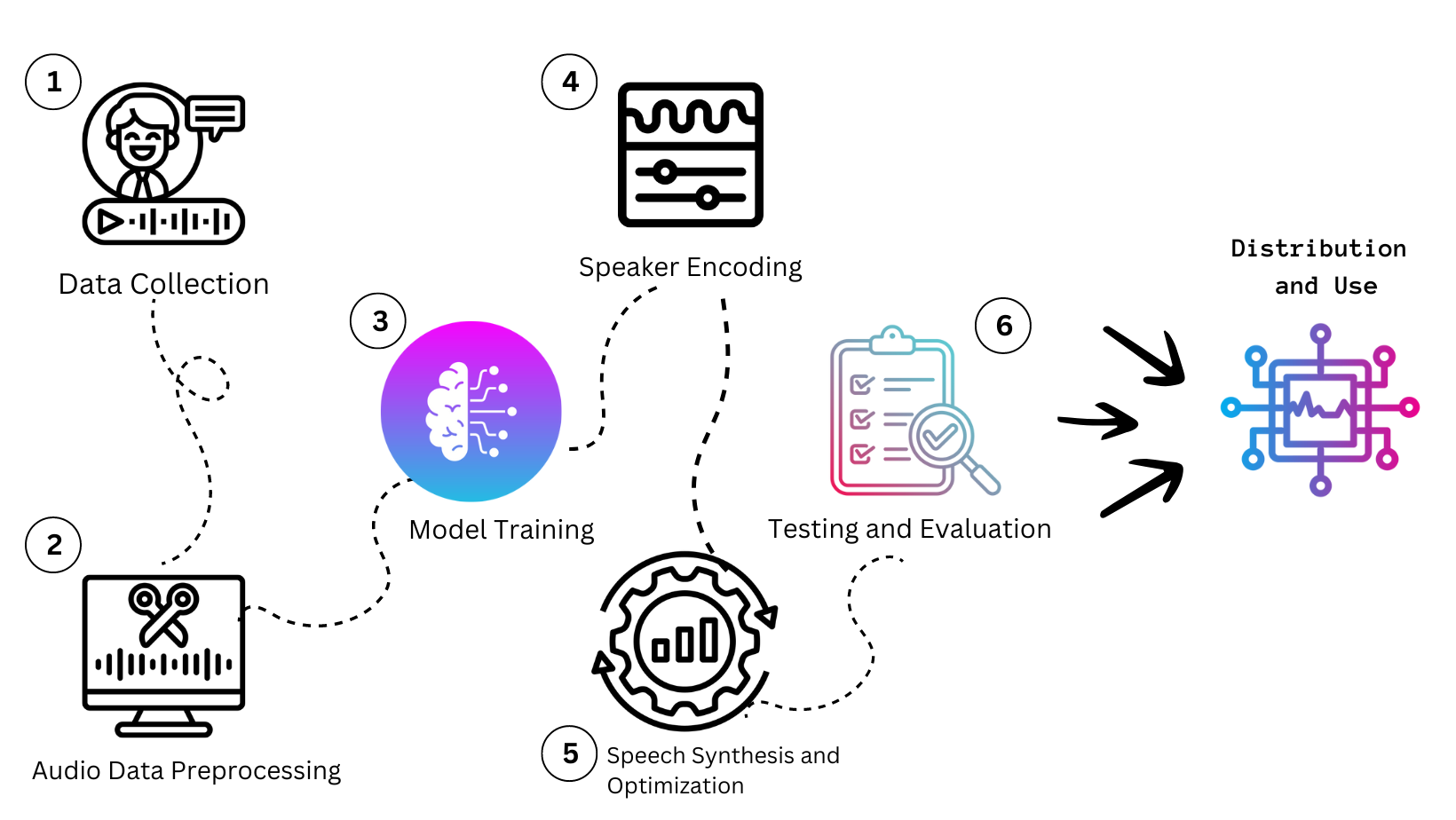
Deepfake voice technology operates on the cutting edge of artificial intelligence, specifically leveraging deep learning algorithms to create synthetic voices that closely mimic real human speech.
The process begins with the collection of extensive audio data from the target voice, which serves as the training data for the deep learning models. The more diverse and comprehensive the dataset, the better the AI models can learn and replicate the nuances of the target voice. This data preprocessing phase involves extracting relevant features and converting the audio into a suitable format for training.
The heart of the deepfake voice creation lies in the application of sophisticated deep learning algorithms, such as recurrent neural networks (RNNs) or convolutional neural networks (CNNs). These algorithms analyze the preprocessed audio data, discerning patterns and unique characteristics of the target voice.
Through multiple iterations of training, the AI model becomes increasingly adept at generating speech that sounds convincingly similar to the target voice. This process is often referred to as voice cloning, as the AI learns to create a "voice clone" of the target speaker.
Fine-tuning plays a crucial role in honing the authenticity of the synthetic voice. After initial training, the AI model may undergo additional training on smaller, more specific datasets to tailor the voice clone to certain emotions, accents, or speaking styles. This enhances the realism and naturalness of the synthetic voice.
However, the creation of deepfake voices requires significant computational power. Training the AI models on powerful graphics cards or specialized hardware accelerators is often necessary to achieve the desired results.
Risks and Challenges of Deepfake Voice Technology
Deepfake voice technology, with its ability to create highly convincing synthetic voices that mimic real human voices, presents significant risks and challenges. One of the main concerns is the potential for voice cloning, where malicious actors could imitate someone's voice and use it to spread misinformation, deceive individuals, or even commit fraud.
The lifelike voices produced by this technology could make it difficult for people to discern between genuine and synthetic audio, leading to the proliferation of fake news and the erosion of trust in audio recordings.
Moreover, the misuse of deepfake voice technology in the creation of synthetic media raises ethical issues. As the technology becomes more accessible, there is a growing risk of its exploitation in harmful ways, such as producing fake audio recordings of public figures or celebrities to make them appear to say things they never did. This could have severe consequences for reputation, privacy, and public perception.
Additionally, the use of synthetic voices in text-to-speech applications or to create synthetic media that resembles real human interactions can raise concerns about consent and the authenticity of content.
Safeguarding against the malicious use of deepfake voice technology is a pressing challenge for policymakers, researchers, and technology developers to ensure the responsible and ethical use of this powerful tool.
Legal and Regulatory Implications

Legal and Regulation: The current absence of comprehensive laws and regulations concerning the use of deepfake voices leaves a gap that can be exploited for misuse or abuse of the technology, emphasizing the need for appropriate legal frameworks to address ethical concerns.
The growing prevalence of deepfake voice technology has brought to the forefront a host of legal and regulatory considerations. Voice cloning, a prominent application of this technology, allows for the replication of an individual's voice, potentially raising concerns related to privacy and consent.
The unauthorized use of cloned voices in various contexts, such as creating deepfake voices for malicious purposes or manipulating audio samples, poses significant ethical challenges.
Additionally, with text-to-speech and voice conversion tools like Veritone Voice, the lines between genuine human voices and synthetic voices become increasingly blurred, demanding clear disclosure to users to prevent deception. As this technology evolves, policymakers and regulatory bodies must grapple with the complexities surrounding copyright, intellectual property rights, and data protection to strike a balance between innovation and ensuring ethical use of deepfake voice technology.
Also ethical considerations are vital as deepfake technology continues to advance, requiring careful reflection and responsible use to mitigate potential negative consequences.
Misinformation: Deepfakes, with their ability to mimic a person's voice, can be utilized to spread false information and create confusion, leading to potential damage to the reputation and public trust in individuals or organizations.
Fraud: The technology of voice cloning and deepfake voices opens the door for criminals to impersonate others, including bank officials or government figures, allowing them to extract sensitive information or commit fraudulent activities.
Privacy: Deepfakes can be generated from small audio recordings obtained without an individual's knowledge or consent, raising concerns about privacy rights. Additionally, using these cloned voices for entertainment or commercial purposes without explicit permission may infringe upon a person's rights.
Manipulation: Deepfake voices can be misused to create fake audio recordings targeting socially marginalized communities, perpetuating harmful stereotypes and promoting discrimination. Furthermore, this technology enables the creation of fake news or propaganda, potentially influencing public opinion.
Top Deepfake Voice and Synthetic Voice Generation Software
BotTalk

Introducing BotTalk, the sensational software reshaping the world of voice technologies. Create incredibly realistic voices in 128 languages from text with its groundbreaking deep learning technology. BotTalk's unique ability to sound natural blurs the line between AI and human voices, unlocking endless possibilities in voice applications, audio content, and various industries.
Experience its astounding quality and adaptability, capturing intonation, emotions, and language nuances flawlessly. Whether for audiobooks, promotional videos, virtual assistants, or any project, BotTalk guarantees impeccable, professional-sounding results. Enjoy the flexibility of free text conversion in supported languages, explore its user-friendly interface, and choose from various pricing plans to cater to your needs.
Embrace the future of voice synthesis with BotTalk today!
Descript
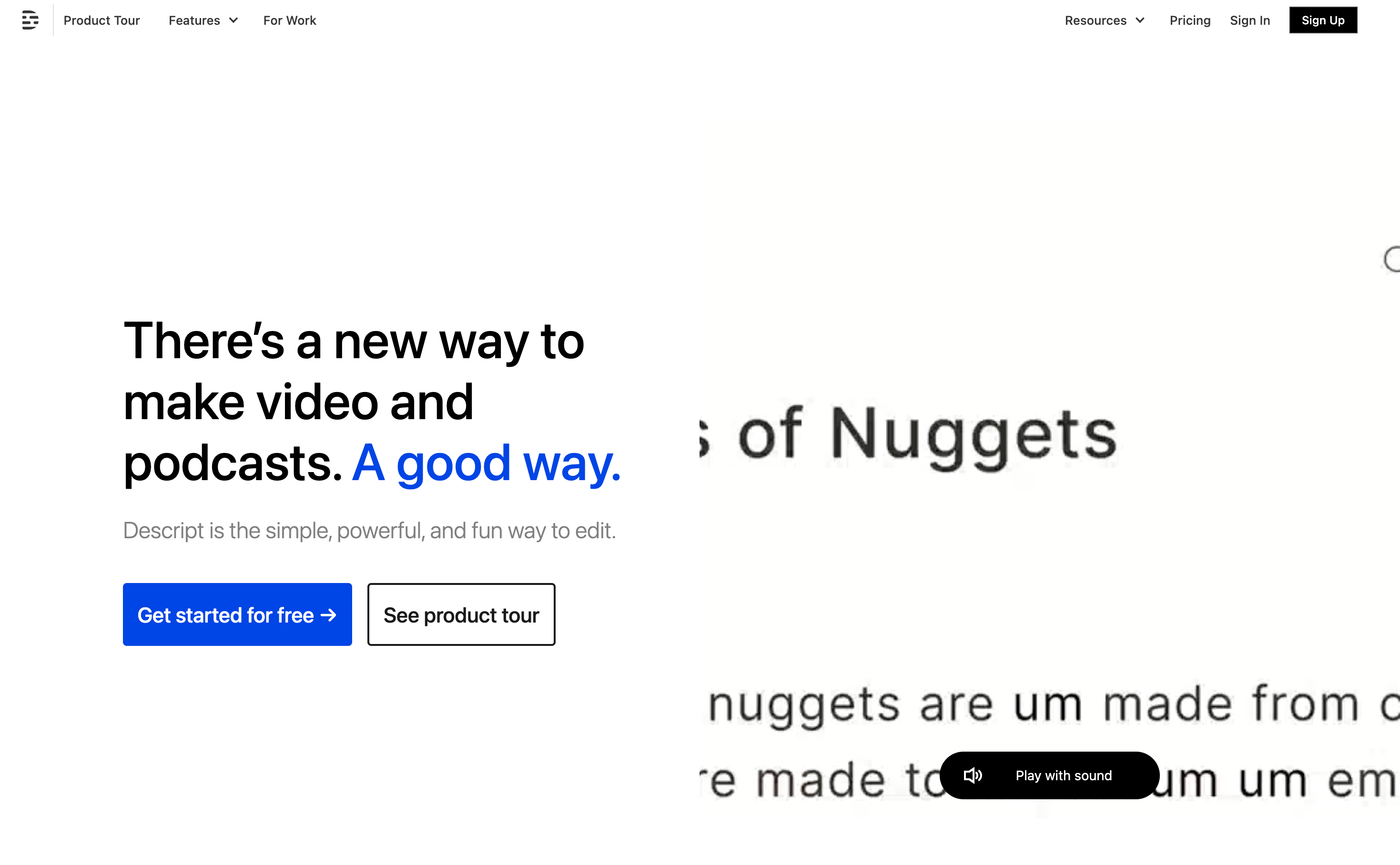
Descript is an AI-powered editor with various helpful features for media editing. It includes fast transcription, speaker detection, filler word and silence removal, multi-track editing, live collaboration, and auto-captioning. Descript uses NLP for voice accuracy and Lyrebird AI for voice cloning and synthesis, enabling the 'Overdub' feature to add audio recordings without re-recording. The tool analyzes audio samples to create deepfake voices for applications like podcasting, voiceovers, and video game production.
iSpeech
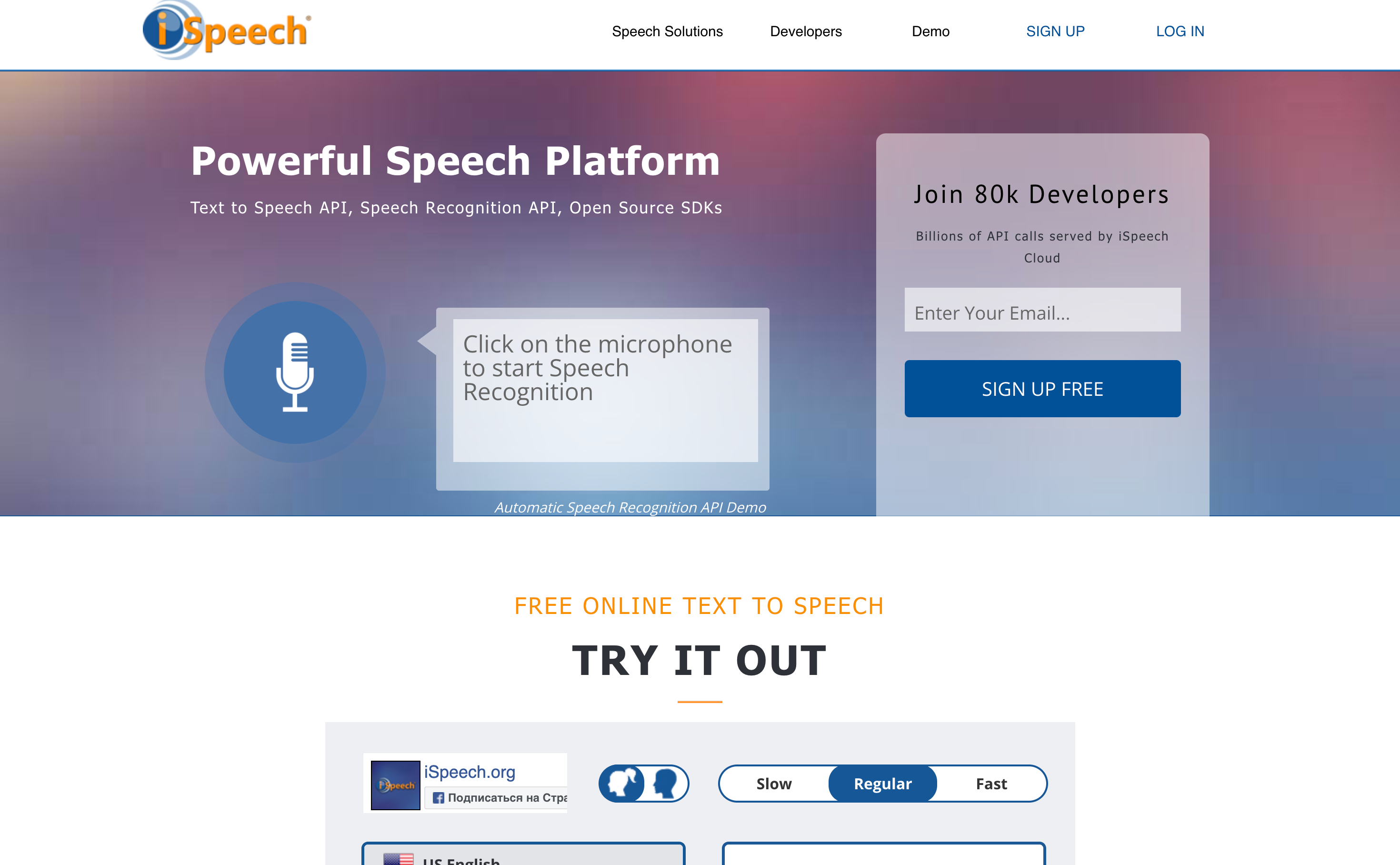
iSpeech is a versatile cloud-based text to speech tool that transforms written text into natural-sounding voices across 30+ languages. With a wide range of voices and dialects, users can customize AI speech, tone, and pace to suit their needs. It's good for voice-enabled apps, e-learning modules, training data, and automated customer care solutions.
Respeecher
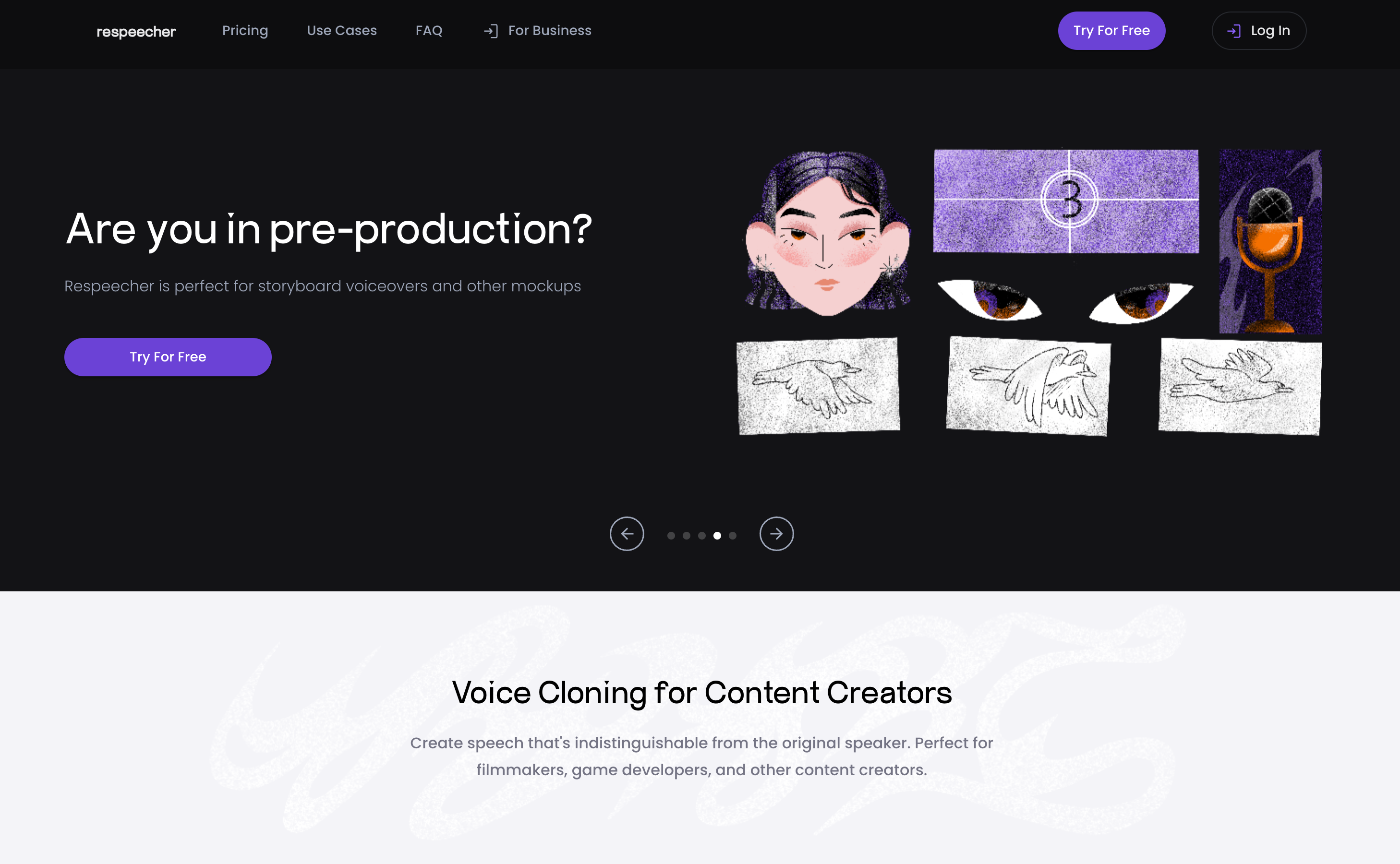
Respeecher is a voiceover software powered by artificial intelligence, capable of replicating a person's voice by analyzing their speech patterns and vocal characteristics. Its language-agnostic technology enables multilingual recordings, offering a versatile solution for creating top-notch voice content.
Respeecher boasts a remarkable feature that maintains the speaker's vocal characteristics even when translating speech into various languages. This cutting-edge tool finds applications in voice assistants, audiobooks, and virtual avatars, allowing for seamless and lifelike audio experiences.
Murf AI
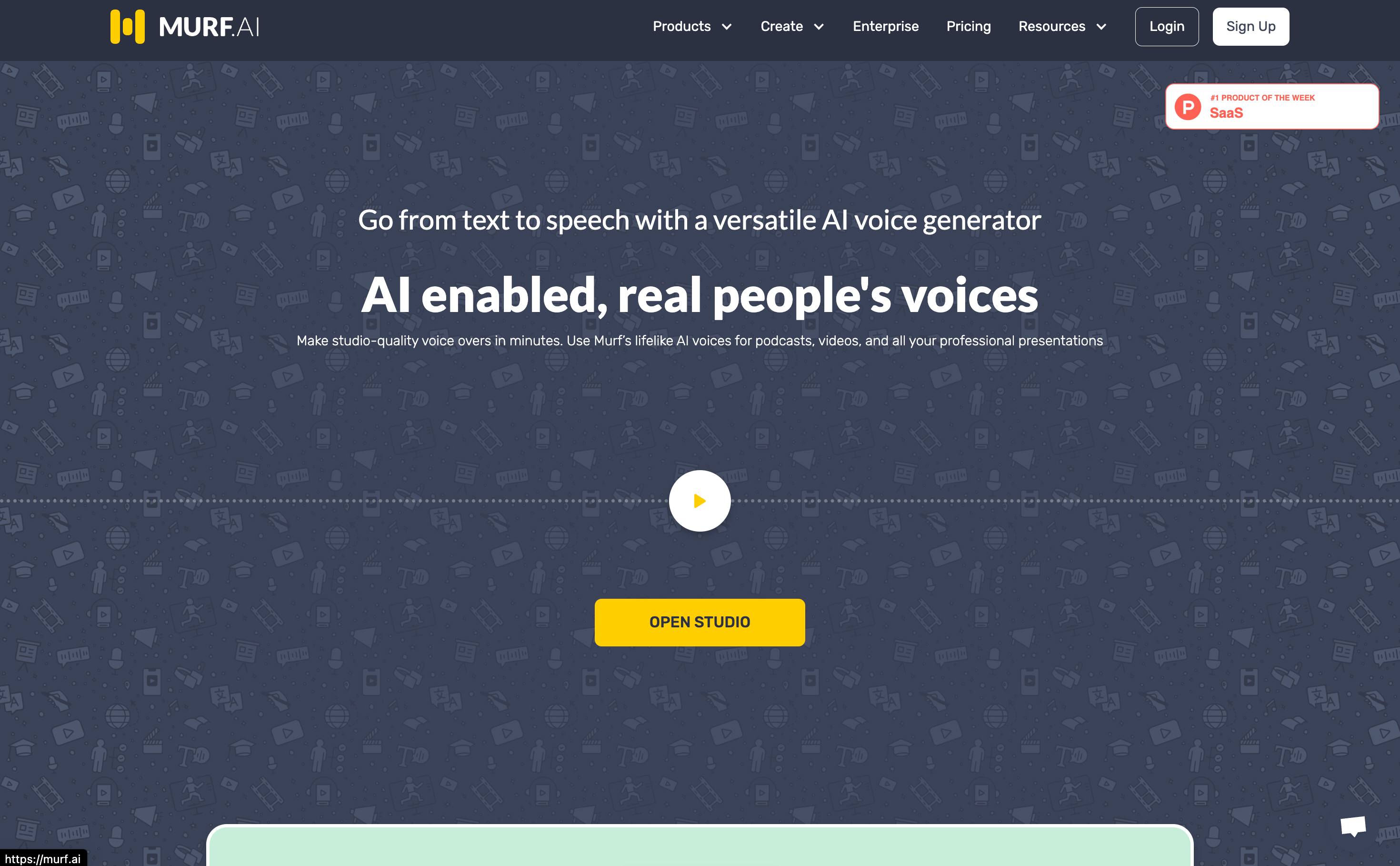
Introducing Murf Studio, an AI voice generator that simplifies content creation with voiceovers. With a diverse collection of 120+ AI voices in over 20 languages, Murf empowers content creators to produce audio content effortlessly. Explore advanced features, including a voice changer to enhance recordings by removing noise, correcting errors, and refining the final result.
Murf allows full customization, enabling users to adjust pitch, speed, and emphasis for a personalized touch. Seamlessly sync generated speech with videos or background music, all within a user-friendly platform.
Benefits of using Deepfake Voice for Individuals and Businesses
For Individuals:
Multitude of benefits for individuals seeking innovative solutions in the realm of audio content creation. One of the most notable advantages is the ability to replicate and use one's own voice for various applications. With deepfake voice tools, individuals can generate synthetic versions of their own voices, which can be particularly useful for those who need to narrate audiobooks, create voiceovers for videos, or provide voice guidance for personal projects.
Moreover, these tools enable the conversion of voice recordings into different languages and accents, breaking barriers in multilingual communication. Deepfake voice technology is not limited to one's own voice; it can also be used to create voice clones for individuals who are unable to record their voices or for those who wish to have their audio files in different languages or accents.
The flexibility and versatility of deepfake voice technology open up a world of possibilities for personalized and engaging audio content creation.
For Businesses
Numerous advantages for businesses, revolutionizing the way they interact with their audiences. One significant benefit is the automation of weather and sports reports, where deepfake voices can deliver real-time updates with exceptional accuracy and clarity. Businesses can generate lifelike audio clips for these reports, enhancing the overall user experience and keeping their audience engaged.
Another advantage lies in the ability to produce content in multiple languages, enabling businesses to reach a global audience more effectively. With deepfake voices, language barriers are overcome, as the technology seamlessly translates and delivers information in various languages, while still retaining the natural human voice characteristics.
Businesses can harness the power of technology to create compelling and dynamic sports reports, as well as deliver vital information in real-time, enhancing their brand's presence and credibility.
The Future of Deepfake Voice Technology
The future of deepfake voice technology holds tremendous promise, driven by advancements in artificial intelligence and text-to-speech synthesis. As AI algorithms continue to evolve, the speech quality of deepfake voices will reach new heights, blurring the line between real human voices and synthetic content. Voice cloning work will become increasingly refined, enabling users to create accurate and convincing replicas of real people's voices with astonishing precision.
Practical applications for deepfake voice technology will expand, benefiting various industries like entertainment and media, where TV producers can use it to generate real-time voiceovers for breaking news and dynamic content. However, the evolution of deepfake voice technology also raises important ethical considerations and the need for robust regulations to prevent its misuse.
Nevertheless, with the right approach, the future of deepfake voice technology promises to be both fascinating and transformative, offering a wealth of opportunities to enhance communication and creativity across different domains.
Conclusion: Embracing the Advancements Responsibly
In conclusion, responsibly embracing the advancements in deepfake voice technology is essential to navigate the possibilities it offers. While audio deepfakes present exciting opportunities, they also come with ethical implications and the potential for misuse. As this technology evolves, it will be crucial to use it responsibly and ethically, ensuring that it is employed for beneficial purposes and not to deceive or harm others.
By using vast amounts of data and AI algorithms, we can create convincing replicas of real people's voices, but we must remain vigilant to prevent the spread of disinformation and misinformation.
Employing deepfake voice technology responsibly means understanding its capabilities and limitations and using it as a tool for positive change, innovation, and creative expression. By doing so, we can harness the power of this technology while safeguarding against potential harm, ensuring that we stay in the optimal range of its potential benefits.
Do you want to learn more?
We have created an inroductory post just for you: 7 Best AI Voice Generators You Must Try Now (2023)
